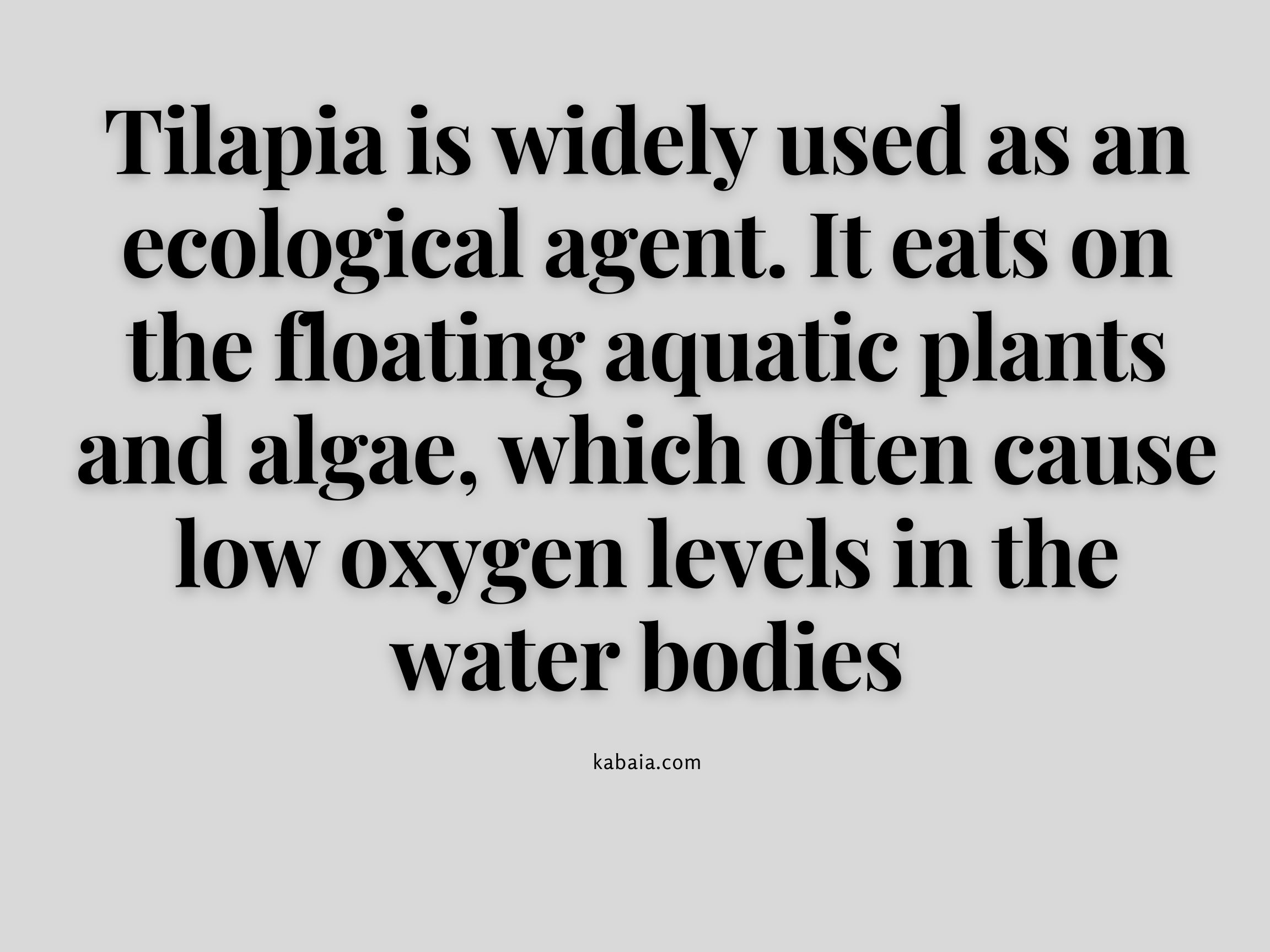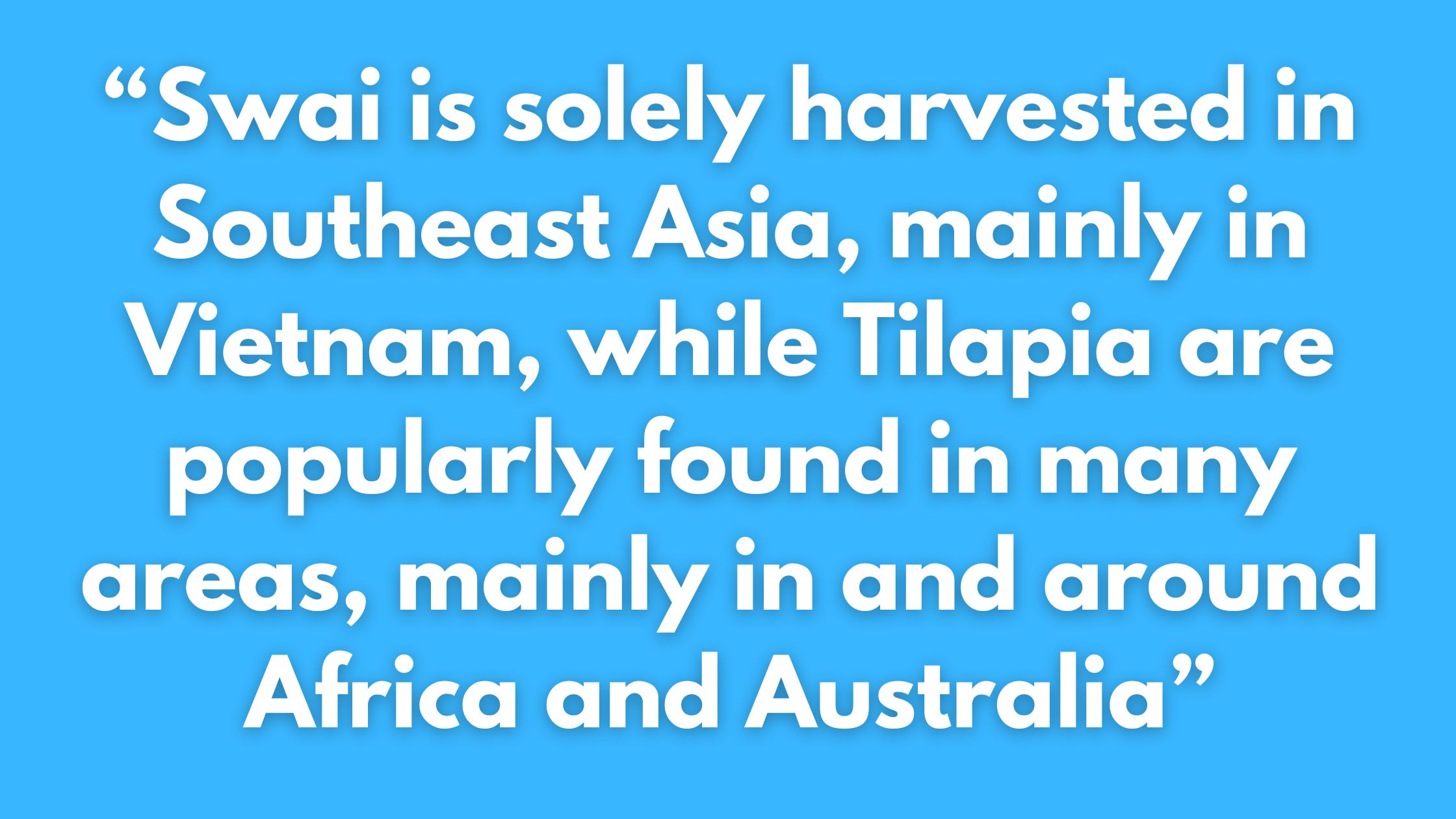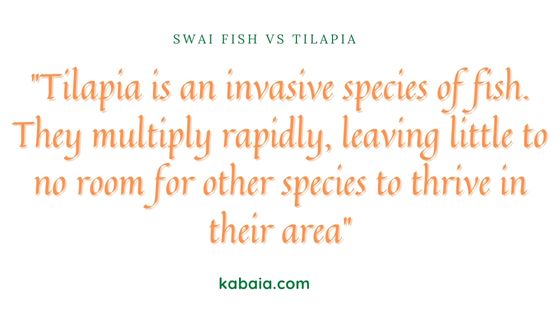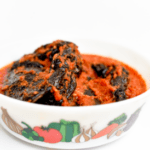This article will thoroughly discuss swai fish vs tilapia examining the two different yet commonly confused – fish species.
What is Tilapia?
Tilapia is a freshwater fish found in the warm waters of almost every corner of the world. This particular species of fish originate from the Nile river of Africa. According to Marine and Freshwater Research 2011, Tilapia are an invasive species and can be found in almost all warm bodies worldwide. However, they do not have the tendency to survive in cold temperatures and hence can not be found in temperate climates.
Other than being sensitive to extreme temperatures, Tilapia can survive and adapt to the harshest conditions.
Tilapia is of keen importance for aquaculture and is one of the 4th most eaten fish in the US, according to the per capita consumption in the year 2014 as lodged by World Atlas.
Their abundance, low price, and mild taste have made it a popular choice amongst many.
Tilapia belongs to the cichlid family of fishes, which have two sets of jaws that help process various foods. With conical-shaped teeth and wide swollen lips, Tilapia isn’t the most good-looking fish.
They have a long dorsal fin protruding from their backs, which covers more than half their length.
Apart from enjoying their delicate and flaky meat, Tilapia is widely used as an ecological agent. It eats on the floating aquatic plants and algae, which often cause low oxygen levels in the water bodies.
This substantially increases the oxygen levels and creates a healthy breeding ground for other fishes.
Tilapia are invasive, but not in terms of eating food. They usually thrive on materials that other fishes don’t even consider food. Due to this, Tilapia is often referred to as the garbage-eating fish.


What is Swai?
Swai is a freshwater fish that is closely related to catfish. Here’s an article I wrote earlier; I suggest you give that a read to learn everything you should know about Where does Swai Fish come from? Its Odd History and Origin
Difference between Swai fish and Tilapia
● Swai is a freshwater fish native to the Southeast region of Asia. It is massively produced in Vietnam along the Mekong river. It is one of the 6th most in-demand fish in the US. In contrast, Tilapia is a freshwater fish native to the Nile region of Africa. Tilapia is the 4th most eaten fish in the US. Its harvest is not limited to Asia; it is grown worldwide on designated Tilapia farms.
● Tilapia fish harvesting requires a bit more space compared to Swai fish farming. Unlike Swai, Tilapia don’t thrive well on cramped farms.
● Swai is solely harvested in Southeast Asia, mainly in Vietnam, while Tilapia are popularly found in many areas, mainly in and around Africa and Australia.
● Tilapia is an invasive species of fish. They multiply rapidly, leaving little to no room for other species to thrive in their area. At the same time, Swai is considered one of the endangered fish species that may soon become extinct.


● It is almost impossible to find fresh Swai unless you live in Southeast Asia. In comparison, fresh Tilapia can easily be found anywhere in the world.
● Humans are the main threat to the consumption of Swai according to the IUCN RED LIST, while large fish species are a more significant threat to Tilapia.
● When talking about price, Swai is one of the cheapest white flesh fishes readily available for use. Whereas Tilapia is sold at a more moderate price, making it a popular choice amongst consumers from all financial backgrounds.
● In size, swai fish grow as big as 166 cm in length and a little over 60 kgs in weight. While Tilapia grows up to 61 cm in length and not more than 1kg in weight.
● Tilapia has scales and a wet, slimy outlook. They are usually adorned in shades of blue and silver. On the other hand, Swai has no scales but a shiny, gray outlook when small. However, adults grow out to have darker skin and a matt finish.
● Swai is massively harvested for the sole purpose of being fed to humans. In contrast, Tilapia harvests are massively used to clean unwanted vegetation in large water bodies.
● Swai is an egg-laying species that migrate and swim upstream to a breeding ground during late summers. They prefer to spawn in areas close to the river bank. While Tilapia is also an egg-laying species, they are also mouthbrooding. This means they carry their fertilized egg and young fish in their mouths for a certain period.
● Swai eats smaller fishes, insects, and plant matter, along with anything that comes its way. While Tilapia has a diet that contains mostly vegetation such as algae, mosquito larvae, and other fishes waste materials – putting the fish under many accusations.
● Tilapia flesh has more fat content, while Swai filets are larger in terms of size but less fatty. Tilapia filets also have dark-coloured areas of meat, while the SwaiSwai is evenly beige.
● In terms of taste, Swai is far milder than Tilapia. Well, this can be both good or bad, depending on what dish the fish is being used for. If it’s battered fish and chips where a distinct fish flavour is not what you are looking for, then Swai is a good choice. If it’s a more gourmet dish like fish in lemon and herb butter sauce, then a more distinct tasting fish, such as Tilapia, is a better option.
You may also like: Tilapia vs Catfish? Which One is Best and 3 Reasons Why!


Swai fish Vs Tilapia -similarities:
When it comes to similarities, there are only a few.
The most important of them is their taste and texture.
● Tilapia and Swai Are mild-tasting fish with a naturally sweet-tasting flavour and flaky texture.
● Both fish have similar nutritional value and are a good source of lean proteins and omega-3 fats.
● Both Tilapia and Swai are freshwater fishes and are massively farmed to meet the demands of the consumers.
● They are evenly categorized as not being the healthiest type of fish, given that they are raised in similar conditions, despite being harvested in starkly different regions.
● Mainly, both Tilapia and Swai are economically priced and can be easily found worldwide.
So while there are tons of differences between Swai fish and Tilapia, there are a few similarities, which lead to one being confused.
So, next time you see someone selling ‘Fresh’ Swai, which has scales, you will undoubtedly know what fish that is!
We will like to hear from you.
What did you think about the Swai fish vs Tilapia comparison? What other pairs of common fish seem confusing to you?
Share your feedback using the comment box below.
Related article: Swai Fish vs Catfish? Here Are 5 Health Facts Every Savvy Eater Must Know!





you didn’t say that tilapia tastes like shit
No, I didn’t say so.
As you can imagine, just like the French say, on matters of taste and color, there is no discussion as such matters are usually very subjective.
But do you think Talapia is shit? If yes, why do you think so?
Some ppl say that when they don’t know how to prepare it.
That is an interesting point of view, Gee Gee.
Thank you so much for your time and energy you put into this read!! 🙏🏻 It was very informative. Exactly what I was looking for and not too lengthy! Kuddos to you!
*sidenote: maybe the Talapia didn’t taste like shit after all! Lmao!
Hello Nannie,
Glad you liked the article.
You may want to also subscribe to our mailing list so you get notified of updates and other resources we post regularly.
As per your side note, I guess on the basis of the evidence so far I couldn’t agree with you more!
Regards
So Tilapia vs Swai… as you said taste is subjective. Depending who you ask is the answer you’ll get. It’s like an elbow or an opinion EVERYBODY HAS AT LEAST ONE for the most part. To me the taste of Tilapia depends on where it was farmed raised. I’ve had it in Costa Rica straight from a pond and it was the cleanest and whitest fish I’ve ever had. HOWEVER, i buy it here in the states and it sometimes has a dirt/muddy after taste in certain parts of the flesh. This is also true for regular north American catfish. However, Swai even though it might be raised in nasty rivers where water quality is questionable for some reason seems to taste very mild and sweet and doesn’t have any muddy after taste. But then again anything batter dipped and fried is amazing…. So at the end of the day does one taste better than the other…. obviously it does…. it’s the one YOU like and choose. As with any fish be it freshwater or saltwater many factors play a roll in not just taste but nutritional value. Long lived fish such as SwordFish can contain high levels of Mercury because they take so long to get to a commercial size…. freshwater fish grow to full size in a few months so mercury doesn’t accumulate as much in the flesh. However, most farms and sewers in many of the asian country where these fish are farmed dump there waste and waste water into the rivers where the fish are being farmed. So at the end of the day it’s up to you the consumer to figure out what is good what is bad and what taste good and what doesn’t….. good luck and stay safe sonic you give up on fish then donAs Chick Fil-A Says… EAT MORE COWS! 😂 PLEASE Don’t ask if cows are safe to eat…
Very interesting perspective, Roly. Thanks for taking out the time to reflect and share. I couldn’t agree with you more that at the end of the day what we eat is a function of how persuaded we are about the food.
Our goal is to present the information and people should decide what to do with it.
Once again thanks for your insight.